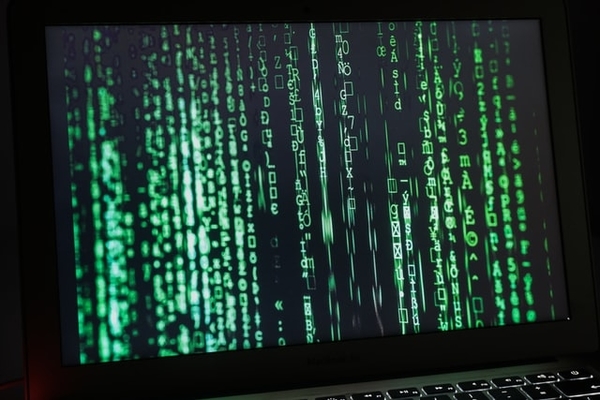
Whether it’s a goal that gets overruled by a VAR decision or it’s a Hawk-Eye challenge that calls a ball out, there’s no doubt that the evolution of fan experience has been at the hands of technology. But in this article, we’ll focus on how technological developments have changed the game of tennis as we know it and has made the fan experience even more enjoyable… Well, sometimes!
The introduction of Hawk-Eye
Hawk-Eye was a revolutionary technological system that was introduced to track the trajectory of a ball and analyse the likely impression left by the ball, making it useful for many sports. The need for such technology to be available in tennis was emphasised after Serena Williams’ loss in the quarterfinals of the US Open in 2004. Towards the end of the match, three line calls were made that left fans across the whole globe in shock – and all three calls went against Serena. Have a look at how Serena and the commentators reacted below, and how the Auto-Ref system being tested at the time was showing all four balls to be in. This controversy sparked the push to get Hawk-Eye available as soon as possible, so that players could challenge the line judges. The US Open was the first grand slam to then introduce Hawk-Eye in its matches, in 2006.
Statistics and strategy
Novak Djokovic, arguably tennis’ greatest of all time (G.O.A.T), is no stranger to technology and has been keen to reap the benefits. Thanks to technology, we now have access to statistics that could never have been efficiently obtained by viewers before. According to Craig O’Shannessy, the strategic coach of Novak Djokovic, the most important shots of a tennis match are the four played at the start of each point. By having access to almost every players’ pattern of play, thanks to instant highlights and replays, strategies can be derived without even having to watch any of the players live or practise with them in person. Therefore, before going on court a player can know, with fairly high certainty, what their opponent’s favourite pattern of play is to execute at a certain point in the match. This type of added edge is what makes rivalries between players even more exciting nowadays since everybody is trying to out-fox one another.
Infosys and the ATP World Tour partnered in 2015, allowing the ATP to have access to tennis data like never before. By being able to store almost every movement and action on the tennis court, Infosys uses its AI technology to churn out statistics that would have required an impossible amount of human effort. A player can now have a fairly accurate idea of where their opponent is likely to serve down a break point, for example, and this all thanks to AI and statistical analysis. Tennis has evolved to a point where a lot of the winning is done before even stepping foot onto the court.
Experience
Whenever a player asks for a call to be challenged, the response of the audience is always a steady clap that then accelerates as the result is played out on the big screen. In that moment, both the players and fans, experience something together. Everybody in the stadium feels the nerves, the pressure, the anticipation. But also, the relief or the disappointment. Thanks to technology, players and fans can now share these moments; truly witnessing triumph and disaster in real-time. It also gives the fans the opportunity to see how accurate their own line-calling is. Sudden screams or groans from the fans can spur players to challenge a certain call, and this inevitably improves the fan experience. Fans can be sitting at home, halfway across the world, livestreaming the match and experiencing almost exactly what fans are experiencing in the stadium thanks to streaming technology. If fans miss the match, they have access to instant replays or highlights… all at the click of their fingers.
How far is too far?
But even with such great innovations, there has to be a limit. World Team Tennis (WTT) is an exhibition-style event played in the U.S. which has, since 2018, completely relied on Hawk-Eye technology to make line calls, eradicating all line judges. This may seem like a smart move since Hawk-Eye is deemed to be very accurate but from matches in 2020… it’s clearly not infallible. In a 2020 match between teams Orlando Storm and the Washington Kastles, a ball was called in which was clearly seen to be out on the televised broadcast. The umpire had to overrule the automatic call, and it was stated that Hawk-Eye had in fact made a mistake. Though mistakes like these can be rare, they can be devasting depending on the stage of the match.
The upcoming 2020 US Open is also planning on using this technology in order to reduce the number of people in contact with one another during this two-week grand slam tournament. Could an error like the one mentioned before send a player packing? Could a match point won by a player be overruled? While these advances have been proven to be trustworthy and efficient, there is no doubt that these technologies should be kept as second opinions, as opposed to the only opinion. So, to all the line judges out there… it’s not all over just yet.
Sign up to recieve our newsletters
Don't miss out on our latest content!
Recent posts

Pramod Kumar | 2022-03-04
How Are Investments in Genomics Driving Research Projects?
Science, Healthcare, Business | 4 min read

Dillon Lad | 2021-07-10
4 ways we're destroying the environment without even realising
Environment | 4 min read

Dillon Lad | 2021-04-26
The science behind The Matrix: can we power the world with our own mind and bodies?
Technology, Science, Film | 4 min read

Dillon Lad | 2021-01-29
Breaking up Big Tech with a decentralised internet for the future
Technology | 4 min read
